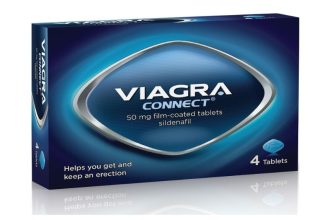UnitedHealthcare’s coverage of Viagra depends heavily on your specific plan. Medicare Advantage plans, for instance, often include prescription drug coverage, but the extent of that coverage varies widely. Check your Summary of Benefits and Coverage (SBC) document; it details what your plan covers and what your out-of-pocket costs will be.
Many UnitedHealthcare plans require pre-authorization for Viagra. This means you’ll need to get your doctor to contact UnitedHealthcare beforehand to obtain approval for the prescription. This process can take time, so plan accordingly. Failure to obtain pre-authorization may result in higher costs or outright rejection of the claim.
Generic alternatives to Viagra, such as sildenafil, are often significantly cheaper. Your doctor can discuss whether a generic option is suitable for you. Exploring this possibility can reduce your healthcare expenses considerably. Always consult your physician before switching medications.
Your out-of-pocket costs will depend on your plan’s copay, coinsurance, and deductible. The SBC, accessible online or through your plan administrator, provides a detailed breakdown of these costs. Careful review of this document is crucial for understanding your financial responsibility.
Consider contacting UnitedHealthcare’s customer service directly for clarification on your specific plan’s coverage. They can provide personalized information based on your plan details and answer any questions you have about pre-authorization and cost-sharing.
- United Healthcare Coverage of Viagra: A Detailed Guide
- Understanding Your Plan’s Formulary
- Factors Affecting Coverage
- Generic Options
- Negotiating Costs
- Seeking Further Information
- Disclaimer
- Does UnitedHealthcare Cover Viagra for Erectile Dysfunction?
- Checking Your Plan’s Coverage
- Factors Affecting Coverage
- Alternative Treatment Options
- What Factors Influence Viagra Coverage Under UnitedHealthcare?
- Prior Authorization Requirements for Viagra with UnitedHealthcare
- Steps to Obtain Prior Authorization
- Factors Influencing Approval
- Appealing a Denial
- Finding Affordable Viagra Options with UnitedHealthcare.
- Alternative Medications Covered by UnitedHealthcare for Erectile Dysfunction.
- Understanding Your UnitedHealthcare Plan’s Prescription Drug Coverage.
United Healthcare Coverage of Viagra: A Detailed Guide
Check your specific UnitedHealthcare plan’s formulary. Coverage varies significantly depending on your plan type (PPO, HMO, etc.) and the tier assigned to Viagra (or its generic equivalent, sildenafil).
Understanding Your Plan’s Formulary
Your plan’s formulary is a list of covered medications. Access it online through your member portal or contact UnitedHealthcare member services. Look for “sildenafil” or “Viagra” to determine coverage status and cost-sharing requirements (copay, coinsurance, deductible).
Note: Prior authorization might be required, meaning your doctor needs to justify the prescription before UnitedHealthcare approves coverage. The formulary will indicate whether prior authorization is necessary.
Factors Affecting Coverage
Several factors influence UnitedHealthcare’s coverage of Viagra: your medical history, the diagnosis for which Viagra is prescribed (e.g., erectile dysfunction, pulmonary hypertension), and your plan’s specific benefits. A pre-existing condition may impact approval.
Generic Options
Consider using the generic version, sildenafil. It’s often cheaper and equally effective. Check your formulary to see if sildenafil is covered at a lower cost-sharing level than brand-name Viagra.
Negotiating Costs
If the cost is still high, explore options like UnitedHealthcare’s patient assistance programs or manufacturer coupons to reduce out-of-pocket expenses. Contact UnitedHealthcare directly to discuss available financial assistance.
Seeking Further Information
Contact UnitedHealthcare member services. They can provide personalized information about your plan’s specific coverage of Viagra and address any questions you have.
Disclaimer
This guide offers general information. Always refer to your official plan documents and consult with your healthcare provider and UnitedHealthcare for definitive coverage details.
Does UnitedHealthcare Cover Viagra for Erectile Dysfunction?
UnitedHealthcare’s coverage of Viagra for erectile dysfunction varies significantly. It depends on your specific plan, your doctor’s diagnosis, and whether you meet the plan’s criteria for coverage of prescription medications.
Checking Your Plan’s Coverage
The most reliable way to determine coverage is to check your plan’s formulary. This document lists covered medications and their associated costs. You can typically access your formulary online through your UnitedHealthcare member portal. Contacting UnitedHealthcare member services directly is also a good option. They can confirm coverage and explain any co-pays or other out-of-pocket costs you may have.
Factors Affecting Coverage
Pre-authorization may be required before your plan covers Viagra. This involves your doctor submitting documentation to UnitedHealthcare demonstrating medical necessity. Furthermore, generic alternatives, like sildenafil, are often preferred and may be covered at a lower cost than brand-name Viagra. Your plan’s tier system also plays a role; medications in lower tiers generally have lower co-pays.
Alternative Treatment Options
If Viagra isn’t covered, or if the cost is prohibitive, discuss alternative ED treatments with your doctor. Other medications, like Cialis or Levitra, might be covered under your plan, or lifestyle changes and other therapies could be effective.
What Factors Influence Viagra Coverage Under UnitedHealthcare?
Your UnitedHealthcare plan’s coverage of Viagra depends primarily on your specific plan’s formulary and whether your doctor deems the medication medically necessary for a covered condition.
- Plan Type: HMOs, PPOs, and Medicare Advantage plans all have different formularies and coverage levels. Check your plan’s formulary online or contact your plan administrator.
- Pre-authorization: Many plans require pre-authorization before covering Viagra. This means your doctor needs to submit a request justifying the medical necessity of the prescription.
- Medical Necessity: UnitedHealthcare generally covers Viagra only when prescribed for erectile dysfunction resulting from a diagnosed medical condition, not for lifestyle enhancement. Your doctor’s diagnosis and supporting documentation are critical.
- Generic Alternatives: Using a generic equivalent, if available, will likely lower your out-of-pocket costs. Your doctor can discuss this option with you.
- Prior Authorization Appeals: If your pre-authorization request is denied, you can appeal the decision. Understand your plan’s appeals process and gather supporting medical evidence.
To determine your exact coverage, review your plan’s Summary of Benefits and Coverage document or utilize your plan’s online member portal. Contacting UnitedHealthcare member services directly can also provide specific answers based on your unique circumstances.
- Consult your doctor regarding your treatment options and the likelihood of coverage.
- Verify the formulary status of Viagra or its generic alternatives on your plan’s website.
- Be prepared to provide comprehensive medical documentation supporting the necessity of Viagra for your condition.
Prior Authorization Requirements for Viagra with UnitedHealthcare
Check your UnitedHealthcare plan’s formulary and contact your doctor or pharmacist to confirm coverage. Prior authorization is often required.
Steps to Obtain Prior Authorization
- Your doctor submits a prior authorization request through UnitedHealthcare’s provider portal or designated system. They will need to provide clinical justification.
- UnitedHealthcare reviews the request, typically taking several business days. The decision will be communicated to your doctor and you.
- If approved, your prescription can be filled. If denied, you can appeal the decision, usually by providing additional medical information.
Factors Influencing Approval
- Your medical history, including pre-existing conditions.
- The severity of your erectile dysfunction.
- Other treatments you’ve tried.
- Your overall health.
Specific requirements and timelines vary depending on your plan type and state. Refer to your member handbook or contact UnitedHealthcare customer service directly for detailed information pertinent to your policy. They can provide specific guidance on submitting the necessary documentation for your particular situation.
Appealing a Denial
If your prior authorization is denied, carefully review the denial letter. It will outline the reasons and steps for appealing the decision. Gather any additional medical information that supports your need for Viagra and follow the instructions in the letter. Consider consulting with your doctor about the appeal process.
Finding Affordable Viagra Options with UnitedHealthcare.
Check your UnitedHealthcare plan’s formulary. This document lists covered medications and their associated cost-sharing levels (copays, coinsurance). Viagra, or its generic equivalent sildenafil, may be included, potentially reducing your out-of-pocket expenses.
Explore UnitedHealthcare’s prescription drug discount programs. These programs can offer lower prices on medications not covered under your plan, including Viagra. Eligibility requirements vary; check your plan details or contact UnitedHealthcare directly.
Consider using a mail-order pharmacy. Often, mail-order pharmacies offer cost savings on prescription medications, including Viagra, compared to local pharmacies. Check with UnitedHealthcare for participating pharmacies.
Ask your doctor about generic sildenafil. This is the generic version of Viagra and usually costs significantly less. Your doctor can help you determine if this is a suitable alternative.
Negotiate price with your pharmacy. While not always successful, it’s worth attempting to negotiate a lower price, especially for long-term prescriptions of Viagra or sildenafil. Be polite and professional.
Compare prices across different pharmacies. Before filling your prescription, compare prices at various pharmacies in your network. Online pharmacy price comparison tools can be helpful.
Inquire about financial assistance programs. UnitedHealthcare may offer financial assistance programs for members facing high prescription costs. Contact UnitedHealthcare’s customer service for more details.
Alternative Medications Covered by UnitedHealthcare for Erectile Dysfunction.
UnitedHealthcare may cover alternative treatments for erectile dysfunction (ED) depending on your specific plan and physician recommendations. These alternatives often focus on addressing underlying health conditions contributing to ED.
Before exploring alternatives, discuss your ED with your doctor. They can help determine the root cause and recommend the best treatment path. This often includes lifestyle changes and potentially medication.
| Medication Type | Possible Coverage (Check your plan) | Mechanism of Action (Simplified) |
|---|---|---|
| Phosphodiesterase-5 (PDE5) Inhibitors (e.g., Cialis, Levitra) | Often covered with prior authorization. | Relax blood vessels in the penis, improving blood flow. |
| Alprostadil (Caverject, MUSE) | May be covered; requires doctor’s assessment. | Directly relaxes penile muscles, facilitating erection. |
| Testosterone Replacement Therapy (TRT) | Covered if low testosterone levels are confirmed. | Replenishes testosterone, often improving sexual function. |
Your plan’s formulary, pre-authorization requirements, and specific coverage details vary. Contact UnitedHealthcare directly or check your member portal for the most accurate and up-to-date information on covered medications and procedures.
Remember to discuss any potential side effects and interactions with your doctor before starting any new medication. They can help you manage your treatment effectively.
Understanding Your UnitedHealthcare Plan’s Prescription Drug Coverage.
Check your plan’s formulary. This document lists covered medications and their tier levels, directly impacting your out-of-pocket costs.
Understand your formulary’s tiers. Generally, generic drugs are lowest cost (Tier 1), followed by preferred brands (Tier 2), and non-preferred brands (Tier 3) with the highest cost-sharing.
Prior authorization may be needed for certain drugs. Contact UnitedHealthcare or your doctor to determine if prior authorization is required before filling your prescription.
Utilize your plan’s online tools. Many UnitedHealthcare plans offer online portals allowing you to check drug coverage, find nearby pharmacies, and manage your prescriptions.
Explore cost-saving options. Ask your doctor about generic alternatives or explore manufacturer coupons and patient assistance programs to reduce costs.
Review your explanation of benefits (EOB). Your EOB details the cost of your prescription and how your insurance contributed. Review this statement carefully for accuracy.
Contact UnitedHealthcare directly for specific questions. Their customer service representatives can provide personalized guidance about your coverage and prescription costs.










